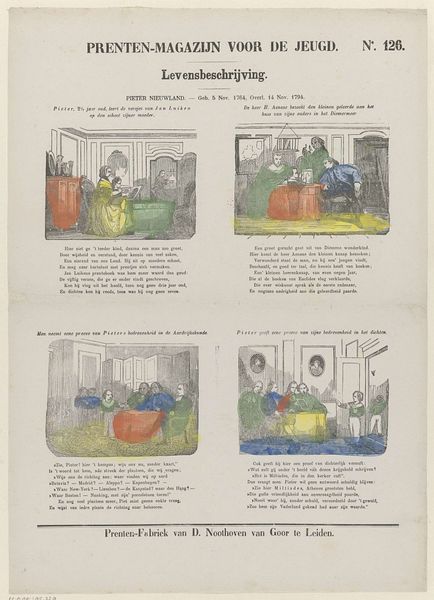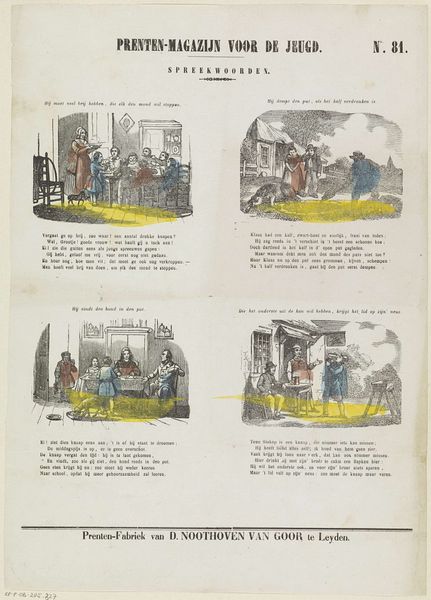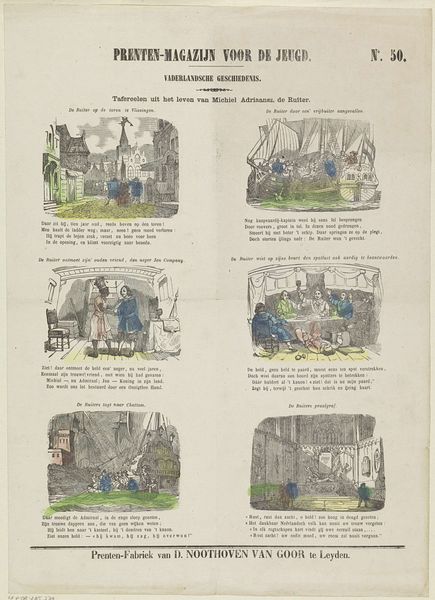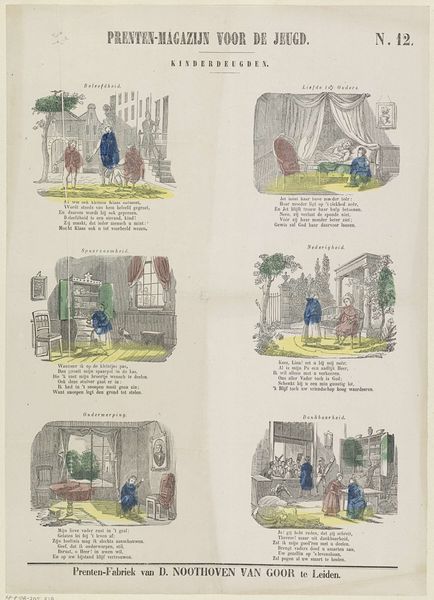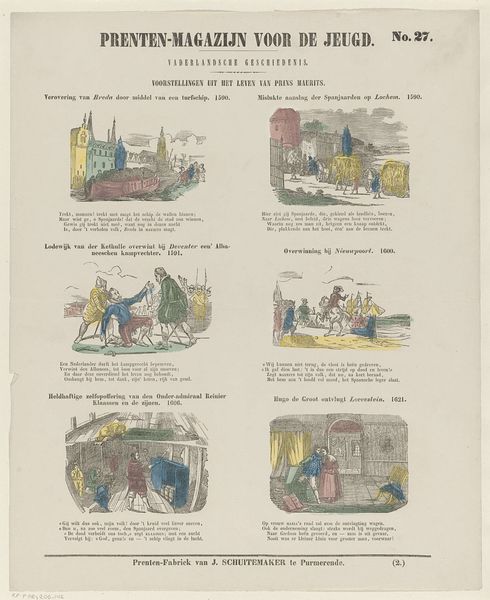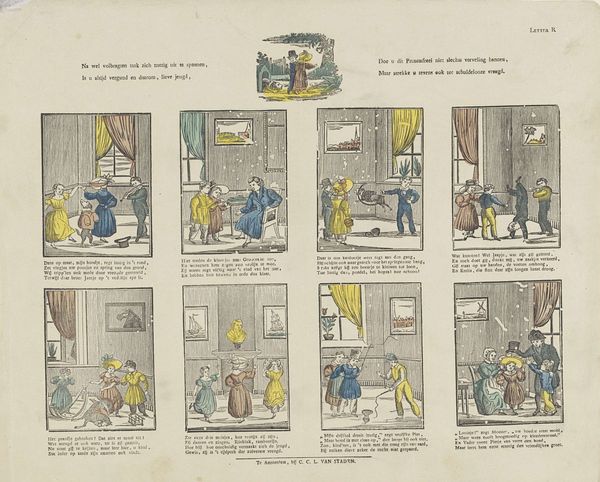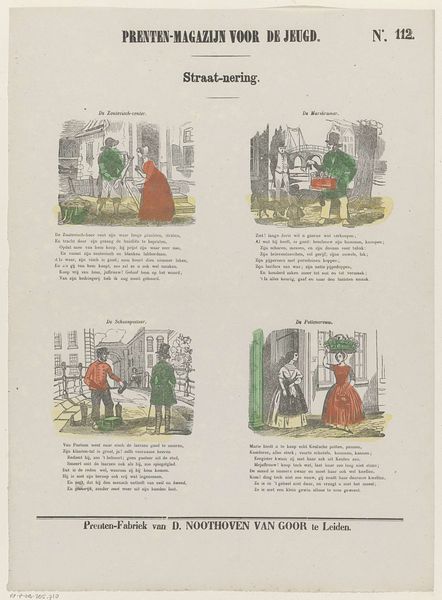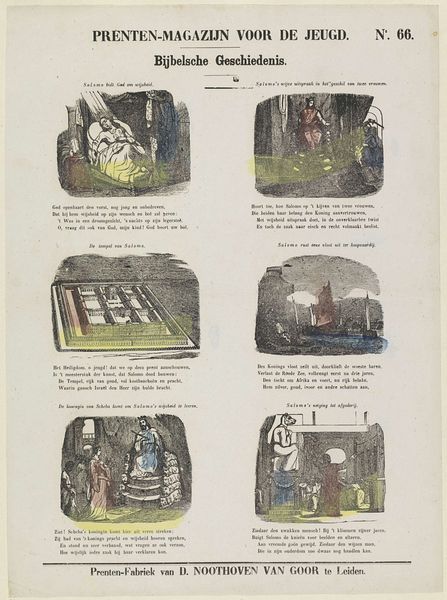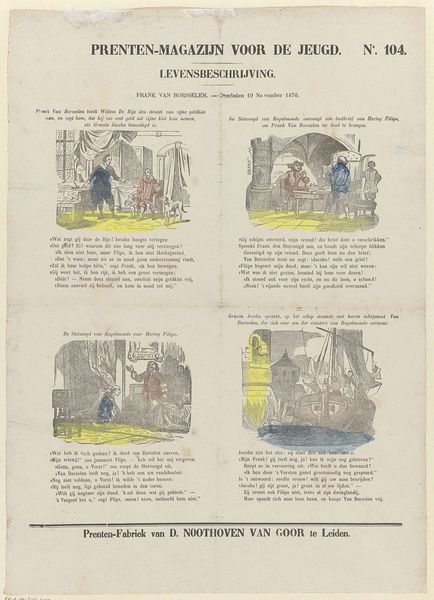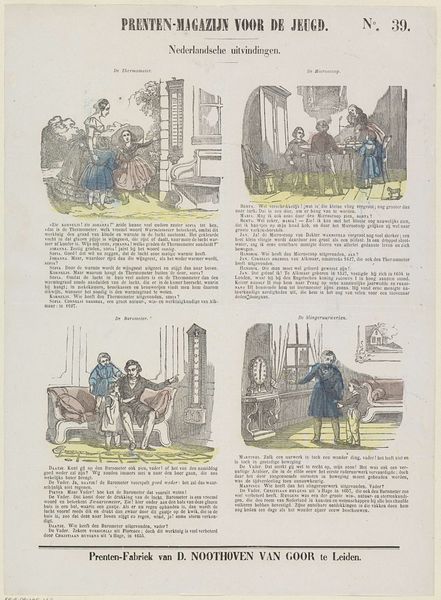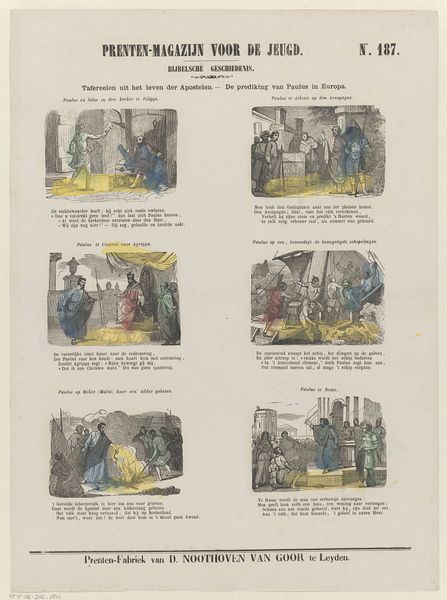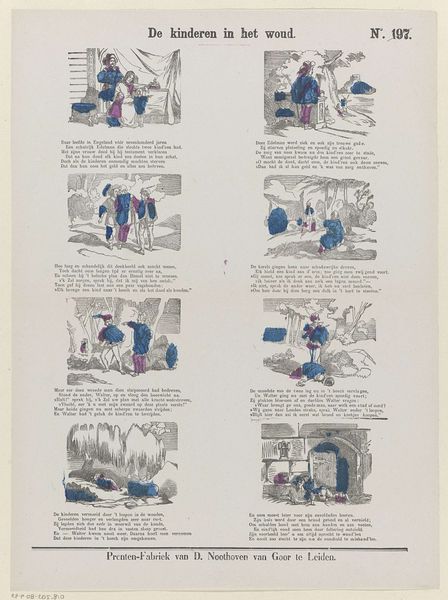![Hier ziet gij, lieve jeugd! den timmerman, den metselaar, den smid en den schoenmaker werkzaam. Wat heeft ieder wel tot zijn handwerk noodig? [(...)] by Antoine Franciscus Cornelis Hoffmann](/_next/image?url=https%3A%2F%2Fd2w8kbdekdi1gv.cloudfront.net%2FeyJidWNrZXQiOiAiYXJ0ZXJhLWltYWdlcy1idWNrZXQiLCAia2V5IjogImFydHdvcmtzLzA4MjY1ZWI1LTM0MmQtNDg4Ni05NjdkLWY3NGQ3YjViMmIwNS8wODI2NWViNS0zNDJkLTQ4ODYtOTY3ZC1mNzRkN2I1YjJiMDVfZnVsbC5qcGciLCAiZWRpdHMiOiB7InJlc2l6ZSI6IHsid2lkdGgiOiAxOTIwLCAiaGVpZ2h0IjogMTkyMCwgImZpdCI6ICJpbnNpZGUifX19&w=3840&q=75)
Hier ziet gij, lieve jeugd! den timmerman, den metselaar, den smid en den schoenmaker werkzaam. Wat heeft ieder wel tot zijn handwerk noodig? [(...)] 1850 - 1881
0:00
0:00
print, engraving
# print
#
genre-painting
#
engraving
Dimensions: height 416 mm, width 309 mm
Copyright: Rijks Museum: Open Domain
Editor: Here we have a print from somewhere between 1850 and 1881 titled "Hier ziet gij, lieve jeugd! den timmerman, den metselaar, den smid en den schoenmaker werkzaam. Wat heeft ieder wel tot zijn handwerk noodig? [(...)]", or "Here you see, dear youth! The carpenter, the mason, the blacksmith and the shoemaker are at work. What does everyone need for their handiwork? [(...)]", by Antoine Franciscus Cornelis Hoffmann. It depicts different craftsmen in their workshops. It’s like a visual lesson about trades! I wonder what message this image held in its time? Curator: This print is a fascinating example of 19th-century educational imagery. Consider the context: widespread industrialization was changing traditional trades. This image presents idealized versions of labor, aimed at instilling values. Editor: What sort of values do you mean? Curator: Think about it. It's called "Prints-Magazine for the youth: crafts," it valorizes honest work and portrays craftsmen as important members of society. These images aimed to shape young minds, perhaps directing them towards specific professions while showcasing an older view of craft that might already be changing. The artist provides not just an illustration, but also a clear purpose of nation building, in some regards. Editor: So, it's not just about showing what these trades are, but also influencing perceptions of them, and even societal expectations. I had thought of it as showing, but the history gives more depth to that impression. Curator: Exactly! By understanding the historical context, we realize this isn’t simply a neutral depiction, it is a tool to communicate ideology and build consensus about social order and who plays which part. Now, consider how that relates to museums showing objects that originally may have helped to advance this narrative? Editor: So we should ask how museums today contribute to a "Prints-Magazine for the youth." Curator: Precisely. Reflecting on the politics of art helps contextualize assumptions and reveal deeper social and institutional forces at play. Thanks! Editor: Thank you. I definitely see it with different eyes now.
Comments
No comments
Be the first to comment and join the conversation on the ultimate creative platform.
